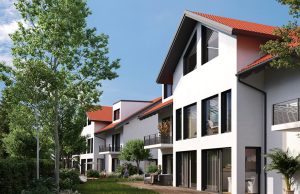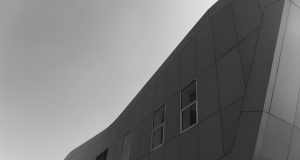Fly ash is gaining prominence in the construction industry as a sustainable alternative to traditional cement. This byproduct of coal combustion offers environmental benefits by reducing carbon emissions and recycling waste materials. Its adoption is crucial for the British construction sector aiming to lower its environmental impact.
As the demand for sustainable building materials increases, fly ash has emerged as a key component in eco-friendly construction practices. By incorporating Fly Ash into concrete, builders can enhance sustainability while maintaining structural integrity. This shift is essential for reducing the carbon footprint of construction projects across the UK.
The role of fly ash in construction
Fly ash serves as an excellent substitute for Portland cement in concrete production, significantly reducing greenhouse gas emissions. This material not only minimises the use of virgin resources but also transforms waste from coal-fired power plants into a valuable construction component. Its environmental benefits are complemented by its ability to enhance the strength and durability of concrete, making it a practical choice for builders seeking long-lasting structures.
The adoption of fly ash in construction is on the rise due to its versatility and cost-effectiveness. Builders appreciate its ability to improve workability and reduce water demand in concrete mixtures, which is particularly beneficial for large-scale projects where efficiency and performance are paramount. Additionally, using fly ash can result in significant energy savings during production compared to traditional cement, reinforcing its role as a sustainable option.
Another advantage of fly ash is its positive impact on the thermal performance of buildings. Concrete containing this material tends to have better insulating properties, leading to reduced energy consumption for heating and cooling. This aspect aligns with broader sustainability goals by promoting energy efficiency within built environments.
Comparing fly ash with other sustainable materials
While fly ash is a prominent choice, other alternative cementitious materials also contribute to eco-friendly construction. Ground granulated blast furnace slag (GGBS) is another option gaining traction. Like fly ash, GGBS is an industrial byproduct that can replace Portland cement in concrete production, significantly reducing CO2 emissions and enhancing the durability of structures exposed to aggressive environments.
In addition to GGBS, silica fume offers another sustainable avenue for builders. This ultra-fine material, produced during silicon metal production, serves as an effective additive in high-performance concrete mixes. Silica fume improves compressive strength and abrasion resistance, making it suitable for challenging construction conditions where durability is critical.
The integration of these materials into conventional building practices requires careful consideration of their properties and applications. By understanding how each alternative performs under different conditions, builders can tailor their approaches to meet specific project needs while maintaining sustainability commitments.
Sustainability implications for the British construction industry
The transition towards sustainable cement alternatives, such as fly ash, marks a significant shift for the British construction industry. Embracing these materials not only supports environmental goals but also positions companies as forward-thinking leaders committed to innovation and responsibility. As regulatory pressures increase and public awareness grows, incorporating these alternatives becomes imperative.
Fly ash’s inclusion exemplifies how waste can be transformed into an asset within the construction sector. Its adoption reflects a broader trend towards circular economy principles where resource efficiency and waste reduction go hand in hand. Builders who prioritise these approaches are likely to gain competitive advantages by aligning with evolving market expectations focused on sustainability.
The road ahead involves continued research and collaboration among stakeholders to optimise these materials’ potential further. By sharing knowledge and best practices, the industry can accelerate progress towards greener building practices that benefit both society and the environment.














